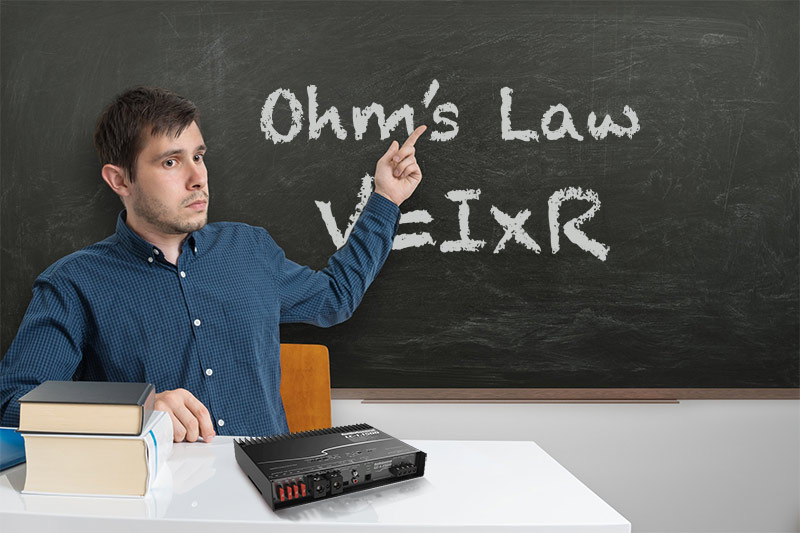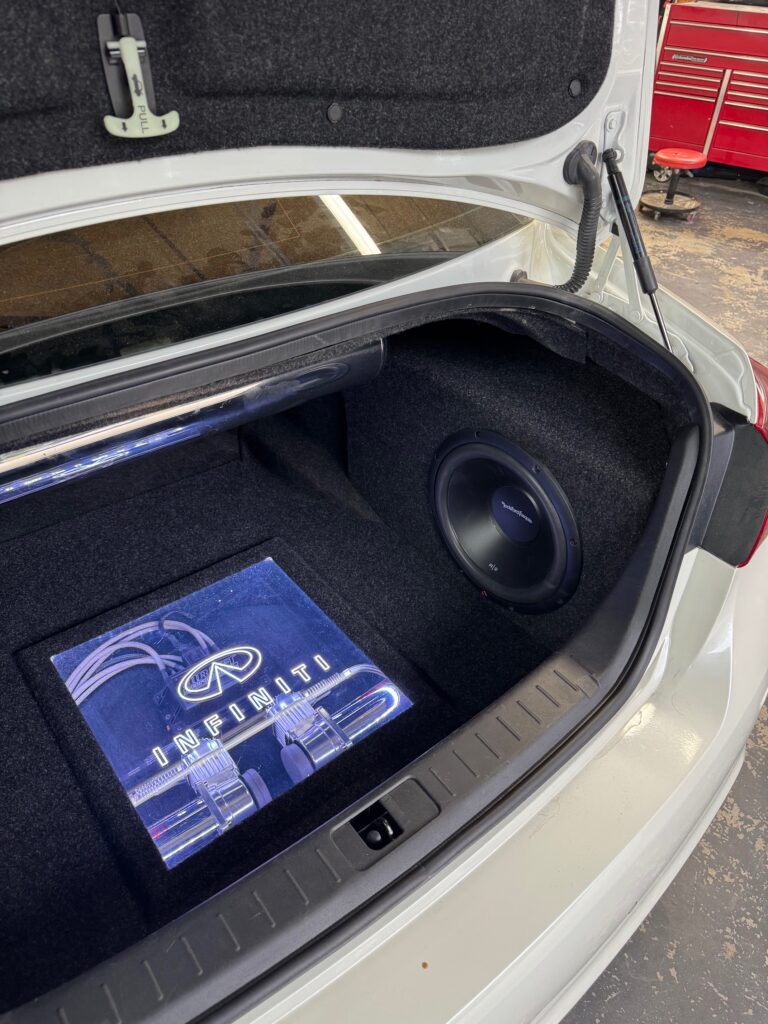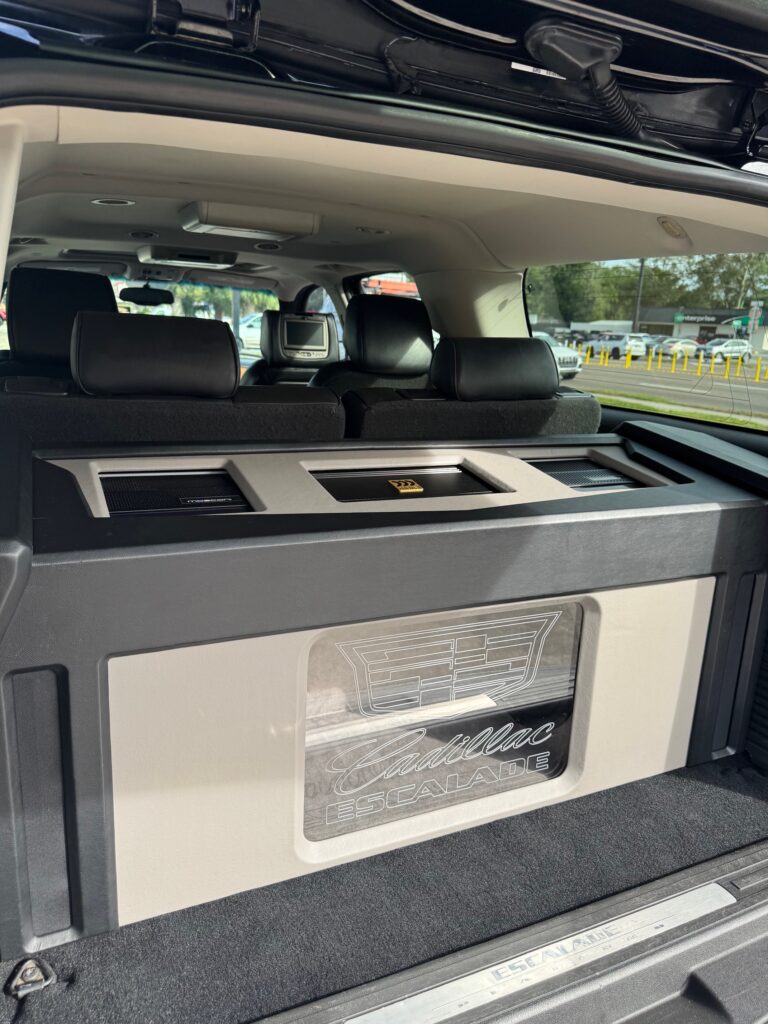 For several years, the Best Car Audio team has provided articles on the features, functions and benefits of all manner of car audio products and services. Well into our third year, it’s time to go back to the basics and talk about the fundamental theories of electricity and how they relate to our car audio systems. Grab something to drink, get comfortable and enjoy: It’s time to get our learn on about the basics and Ohm’s Law!
For several years, the Best Car Audio team has provided articles on the features, functions and benefits of all manner of car audio products and services. Well into our third year, it’s time to go back to the basics and talk about the fundamental theories of electricity and how they relate to our car audio systems. Grab something to drink, get comfortable and enjoy: It’s time to get our learn on about the basics and Ohm’s Law!
What is Electricity?
 In its most basic of terms, electricity is a group of charged electrons that can be used to do work. The electricity in our cars comes from two sources: the battery and the alternator. After the battery is used to start the car, the alternator recharges the battery and provides electricity to run the fans, lights, electronic circuits and computers that keep our cars running.
In its most basic of terms, electricity is a group of charged electrons that can be used to do work. The electricity in our cars comes from two sources: the battery and the alternator. After the battery is used to start the car, the alternator recharges the battery and provides electricity to run the fans, lights, electronic circuits and computers that keep our cars running.
Terminology: Voltage
To understand electricity, you need to understand a few terms. The first we will talk about is voltage. Voltage is a unit of measurement that quantifies the difference in electrical potential between two points. The SI unit of measure is volts and is represented with a capital V.
Once again, in relation to our vehicles, we have a 12V electrical system. More specifically, a fully charged car battery will rest at 12.6 volts for a conventional lead-acid design. Some AGM batteries will rest at 13.0 to 13.2 volts.
You can look at a voltage as electrical pressure. Imagine a water tank sitting on a table. If you connect a hose to the bottom of the tank, gravity will push the water out of the house. If you get a bigger tank, there is more pressure pushing the water out of the hose. So, more voltage is akin to more pressure.
Terminology: Current
 It’s important to know the quantity of electricity moving through a circuit. We use the SI unit ampere to quantify the volume of electrons moving in a conductor. The original definition for the ampere involved quantification of the magnetic force created between two infinitely long parallel conductors (wires). While this is a valid definition, it’s never used in schools or any training. A simpler explanation is that 1 amp of current is equivalent to 6.2415093 × 10^18 elementary charges moving through a boundary over a period of one second. An elementary charge is the is the electric charge carried by a single proton.
It’s important to know the quantity of electricity moving through a circuit. We use the SI unit ampere to quantify the volume of electrons moving in a conductor. The original definition for the ampere involved quantification of the magnetic force created between two infinitely long parallel conductors (wires). While this is a valid definition, it’s never used in schools or any training. A simpler explanation is that 1 amp of current is equivalent to 6.2415093 × 10^18 elementary charges moving through a boundary over a period of one second. An elementary charge is the is the electric charge carried by a single proton.
Using our water analogy, the current flowing in an electrical circuit is similar to the amount of water flowing in a pipe or hose. The amount of water flowing in that hose would be measured in gallons or liters per minute. A higher number means there is more pressure pushing on the water. So, back to our electrical terminology, when more voltage is present, more current flows through our circuit.
Choosing a specific example in an automotive example is tricky because vehicles differ dramatically in their electrical needs. With that said, most new cars and trucks have an alternator that can provide between 65 and 120 amps of current to power different devices. Batteries also vary a great deal as do the ratings available to quantify the amount of current they will provide. Most batteries have a capacity of 60 to 80 amp-hours. This rating descibes a battery’s ability to supply 1 amp of current for 60 to 80 hours before being considered depleted. Sadly, the equation cannot be reversed. A battery can’t supply 60 to 80 amps of current for an hour due to limits in the chemical conversation process.
Terminology: Resistance
 Resistance is the description of the opposition to the flow of current in a circuit. We use the SI unit ohm to quantify this value. Unlike voltage and current, the symbol used to represent resistance is the uppercase Greek letter omega: Ω. More resistance in a circuit reduces the ability for electrons to flow and thereby decreases the number of amps flowing.
Resistance is the description of the opposition to the flow of current in a circuit. We use the SI unit ohm to quantify this value. Unlike voltage and current, the symbol used to represent resistance is the uppercase Greek letter omega: Ω. More resistance in a circuit reduces the ability for electrons to flow and thereby decreases the number of amps flowing.
In our water and barrel example, pinching the hose would increase resistance and reduce the amount of water that flows. In an electrical system, the size of the conductors we use to wire circuits and the design of the circuits themselves determine how much resistance is present.
Terminology: Ohm’s Law
 Thankfully, in simple circuits, the relationship between voltage, current and resistance is linear. When we have more voltage available, more current flows for a given resistance. Likewise, less resistance in a circuit causes more current to flow for a given voltage. Ohm’s law is a simple mathematical equation that allows you to calculate any of the three values, provided you know two others.
Thankfully, in simple circuits, the relationship between voltage, current and resistance is linear. When we have more voltage available, more current flows for a given resistance. Likewise, less resistance in a circuit causes more current to flow for a given voltage. Ohm’s law is a simple mathematical equation that allows you to calculate any of the three values, provided you know two others.
The three equations are:
Voltage = Current x Resistance Current = Voltage ÷ Resistance Resistance = Voltage ÷ Amperage
V = I x R I = V ÷ R R = V ÷ I
Understanding Ohm’s law is the most important factor in working with and understanding electrical circuits.
Ohm’s Law Examples
One of the most common expressions used in teaching people about Ohm’s law is as follows: In a circuit with one volt of potential and a resistance of one ohm, one amp of current will flow. Seeing the relationship between this statement, we can calculate that for a fixed resistance, two amps of current will flow if we increase the voltage to two volts. Said another way, as the voltage potential applied to a circuit increases, the current through the circuit will also increase, as long as the resistance remains constant.
That’s it for our first lesson on car audio electrical theory. In the next lesson, we’ll talk about how we can use electricity to do work and discuss the equations used to quantify this work as power.
This article is written and produced by the team at www.BestCarAudio.com. Reproduction or use of any kind is prohibited without the express written permission of 1sixty8 media.








